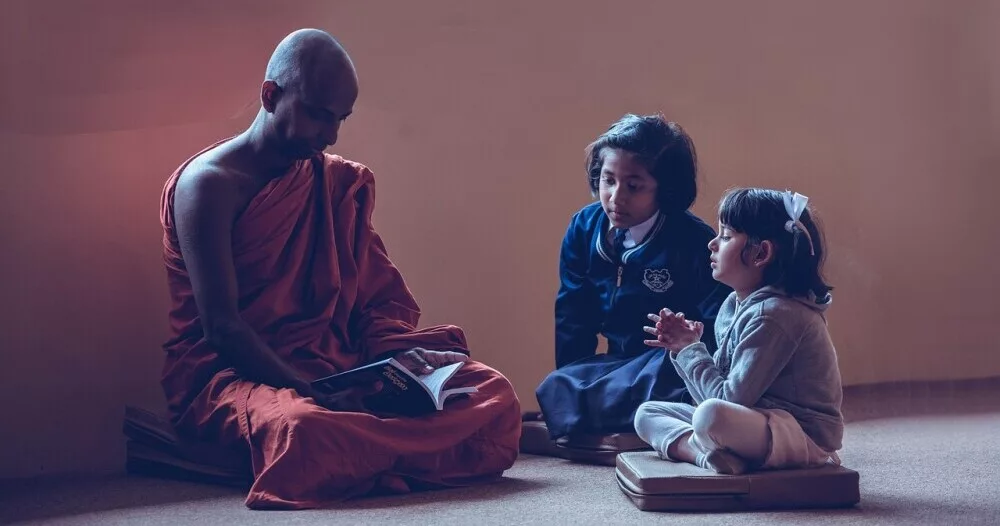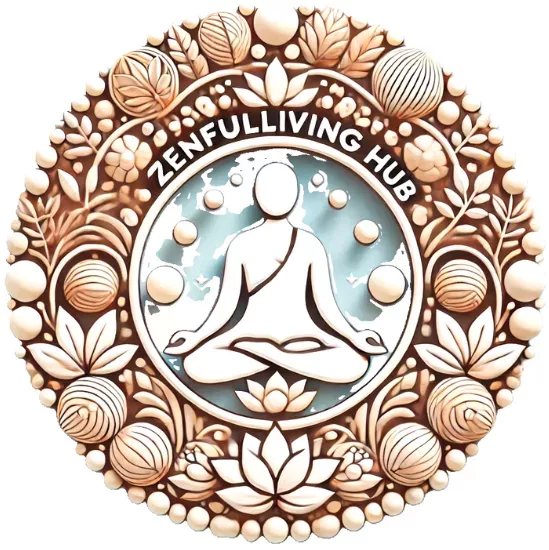
Guided meditation might just be the hidden gem in the world of well-being for kids. It’s a way to help them chill out, gain focus, and explore their big, exciting imaginations. But what’s it all about? Let’s break it down.
What is Guided Meditation for Kids?
Guided meditation for kids is all about using words—scripts, really—to walk them through calming, creative journeys in their mind. Imagine them listening to a story where they’re the hero, and each moment is a cue to relax and breathe. It’s like taking them on a mental adventure that helps them mellow out and concentrate better.
Why Kids Should Meditate
The benefits of meditation for kids are massive. Children dealing with stress, anxiety, or even just an overload of energy can find real peace through meditation. Research from institutions like the American Psychological Association shows that mindfulness practices can improve emotional regulation, focus, and even creativity in children.
During these sessions, some key ingredients make it all work:
- A quiet, distraction-free space.
- A well-crafted script with simple, vivid language.
- A calming voice (yours or a recording).
With these elements, kids can begin their mindfulness journey.
How to Guide Kids Through Meditation
Getting kids into meditation isn’t rocket science, but a few tips can make the process enjoyable and effective. Here’s how to get started:
- Set the Scene:
- Choose a calm, quiet spot in your home, such as a cozy corner or a room where they can sit comfortably.
- Dim the lights and add soft background music for a soothing atmosphere.
- Keep it Age-Appropriate and Engaging:
- Kids have short attention spans, so keep sessions short and sweet. Five to ten minutes is usually perfect.
- Make it fun and interactive by using stories or visualizations. For example, ask them to imagine floating in the sky, exploring a peaceful garden, or riding a magic bubble.
- Engage Their Imagination:
- Use creative scripts that resonate with their interests. Younger kids may enjoy magical adventures, while older kids might prefer themes that focus on self-awareness and mindfulness.
- Use gentle guidance to keep their attention focused.
- Handle Wiggles with Patience:
- It’s normal for kids to wiggle or giggle during meditation. Gently bring their focus back, and remember, consistency is key.
Sample Guided Meditation Script for Kids
Here’s a simple script to get you started:
Title: A Peaceful Beach Adventure
“Close your eyes and take a deep breath in… and out. Imagine you are standing on a soft, sandy beach. Feel the warm sand under your toes. Listen to the gentle waves as they roll in and out. With each wave, feel your body relaxing more and more. Now, imagine picking up a shiny, smooth shell. Hold it close and take another deep breath. Let the sound of the waves fill you with calm. When you’re ready, open your eyes and stretch, feeling refreshed and happy.”
Title: The Magic Bubble Ride
“Close your eyes and take a deep breath in… and out. Imagine you are holding a giant, shimmering bubble wand. Blow gently, and watch as a big, colorful bubble grows. Now, step inside the bubble! It lifts you off the ground, floating gently into the sky. Look down and see your house getting smaller and smaller. You float over trees, rivers, and mountains. Feel the soft, warm wind on your face. Your bubble knows just where to go, keeping you safe and happy. When you’re ready to come back, the bubble gently floats back down. Step out, take a big breath, and open your eyes, feeling joyful and calm.”
Crafting the Perfect Guided Meditation Script
Creating a guided meditation script for kids is all about painting a picture with words that lights up their imagination while helping them find calm and focus. Here’s how to craft one:
- Start with a Theme: Choose relatable themes like magical gardens or superhero adventures.
- Engage the Senses: Encourage kids to imagine what they might see, hear, or feel.
- Make it Fun: Turn the meditation into an adventure that they’ll look forward to. Incorporate playful elements to hold their attention.
- Incorporate Breathing: Add gentle reminders to breathe deeply, like “Take a deep breath and feel peace fill your body.”
Tailoring Meditation for Different Ages and Needs
Kids can start meditating as early as preschool. For younger children, keep it playful and imaginative—think of it as a game of pretend. Older kids can benefit from more structured meditation focusing on mindfulness and self-awareness.
For kids with ADHD, techniques that involve movement or short, engaging visualizations can be helpful. Combining meditation with physical exercise or creative outlets often yields the best results.
Refer to Expert Tips Help Your ADHD Child to find out other mindfulness activities for kids with ADHD.
Additional Resources
- Apps: Try child-friendly meditation apps like Headspace for Kids or Smiling Mind.
- Books: Sitting Still Like a Frog by Eline Snel offers excellent guidance for parents.
- Further Reading: Explore mindfulness practices for kids through resources like Mindful Schools or Greater Good in Education, which provide evidence-based insights and activities for children.
By integrating these practices into their daily routine, you’ll give kids tools to manage their emotions, build focus, and nurture their creativity. Meditation becomes a creative adventure that kids can’t wait to explore again!

Hello Sabrina!
What a thoughtful and inspiring article! Guided meditation scripts for children are such a wonderful way to introduce mindfulness and relaxation at an early age. I love how you highlight the importance of making the practice engaging and age-appropriate—it’s such a crucial detail for keeping kids interested.
I’m curious, have you found that certain themes, like nature or imaginary adventures, resonate more with children during guided meditations? Also, how do you suggest parents or educators handle situations where kids might be resistant to trying meditation?
This article feels like a fantastic starting point for anyone looking to incorporate mindfulness into a child’s routine. Thank you for sharing these valuable insights!
Angela M 🙂
Hi Angela, great question. To be honest I think it is really depending on individual kids. Creating a tailored meditation script for kids at different ages requires understanding their developmental stages, interests, and the language that resonates with them. The goal is to make meditation fun, relatable, and engaging so that it feels like an enjoyable experience rather than a forced activity. But based on my personal experience and research, I found the following is an useful guidance, however, we need to be mindful that each kid is unique and it still requires a tailored approach:
Young Children (Ages 3-6):
Short and Simple: Keep scripts brief, ideally around 3-5 minutes. Their attention span is short, so concise instructions are essential.Playful and Imaginary: Use storytelling, fantasy, and playful language. For instance, imagine they’re floating like a cloud or exploring a magical forest.Use Sounds and Movements: Encourage sounds like animal noises or gentle movements to help them engage. For example, “Imagine you’re a gentle butterfly, floating on the breeze.”Older Children (Ages 7-9):
More Structure: Introduce breathing exercises and simple visualization but still keep it light and fun. The meditation can be about calming their mind or imagining peaceful places like a beach or a garden.Engage with Metaphors: Use metaphors like a superhero powering up or a magical light to represent relaxation and focus.Focus on Emotions: Help them tune into their feelings, encouraging them to visualize letting go of stress or negative emotions (like turning a bad day into a bubble and letting it float away).Tweens (Ages 10-12):
Incorporate Themes of Self-Discovery: At this age, kids start developing their sense of identity. Tailor scripts around themes of self-empowerment, confidence, and inner strength.Longer and More Detailed: The meditation can be longer (5-10 minutes). Introduce techniques like progressive muscle relaxation and breathing patterns like the “square breath.”Use Thoughtful Prompts: Offer prompts to help them think about their feelings or personal goals, like “What are you grateful for today?” or “Imagine your best self.”
I hope those tips are useful 🙂
Guided meditation for kids is a fantastic tool for promoting calm, focus, and creativity. It offers a fun, imaginative way for children to relax and manage their emotions, while also improving their ability to concentrate. By using vivid scripts and engaging stories, kids are able to explore peaceful worlds and practice mindfulness in a way that resonates with their natural curiosity. Whether it’s a short visualization or a calming journey through a favorite theme, meditation can be adapted to suit children of all ages, helping them develop essential life skills like self-awareness and emotional regulation.
I couldn’t agree more! Kids have such amazing creativity, and I’ve found it’s way easier to get them to follow a script or visualization to open up their imagination compared to adults. If they can start developing those skills when they’re young, it’ll definitely benefit them in the long run.